Volume 12 | Number 2 | November 2023
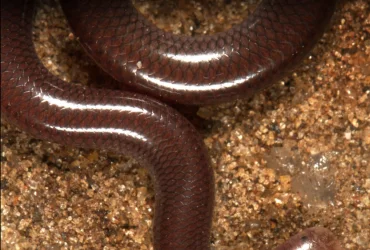 v12i2.311
v12i2.311eISSN: 1800-427X (online)
DOI:10.47605/tapro.v12i2.311
Submitted date: 19 February 2023
Accepted date: 29 October 2023
Published date: 18 November 2023
Pp. 96–97, pl. 26.
Sightings of the witch (Lepidoptera: Araotes lapithis) in Northeast Bangladesh
T. Akhter*, A. Ullah, M.S. Siam, H. Naher, S. Biswas & K. Mree
*Corresponding author. E-mail: taniaaktar733@gmail.com
Biogeographically situated between the Indo-Malayan and Indo-Chinese subregions, Bangladesh is home to over 400 species of butterflies. Lacking sufficient surveys of butterflies, the distribution and occurrence of many species in the country are still not well known. Hence, reports on the sightings of any poorly known butterfly species may help to develop a baseline for designing precise research and open windows for conservation efforts. The global distribution of the witch (Araotes lapithis Moore, 1858) butterfly ranges throughout south and southeast Asia, including India, Bangladesh, Bhutan, Thailand, Malaysia, Cambodia, Myanmar, Philippines and Indonesia. There are few records of the species from different states of northeast India including Assam, Tripura, Nagaland, and West Bengal.
Section Editor: Himesh D. Jayasinghe
DOI:10.47605/tapro.v12i2.311
Submitted date: 19 February 2023
Accepted date: 29 October 2023
Published date: 18 November 2023
Pp. 96–97, pl. 26.
Sightings of the witch (Lepidoptera: Araotes lapithis) in Northeast Bangladesh
T. Akhter*, A. Ullah, M.S. Siam, H. Naher, S. Biswas & K. Mree
*Corresponding author. E-mail: taniaaktar733@gmail.com
Biogeographically situated between the Indo-Malayan and Indo-Chinese subregions, Bangladesh is home to over 400 species of butterflies. Lacking sufficient surveys of butterflies, the distribution and occurrence of many species in the country are still not well known. Hence, reports on the sightings of any poorly known butterfly species may help to develop a baseline for designing precise research and open windows for conservation efforts. The global distribution of the witch (Araotes lapithis Moore, 1858) butterfly ranges throughout south and southeast Asia, including India, Bangladesh, Bhutan, Thailand, Malaysia, Cambodia, Myanmar, Philippines and Indonesia. There are few records of the species from different states of northeast India including Assam, Tripura, Nagaland, and West Bengal.
Section Editor: Himesh D. Jayasinghe
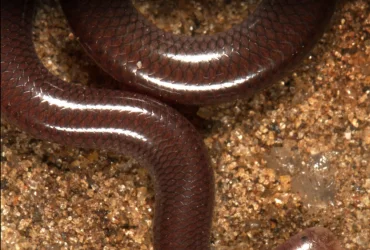 v12i2.310
v12i2.310eISSN: 1800-427X (online)
DOI:10.47605/tapro.v12i2.310
Submitted date: 28 September 2022
Accepted date: 9 November 2023
Published date: 18 November 2023
Pp. 94–95, pl. 25.
On the report of a new world millipede (Rhinotus purpureus) from India
M.D. Aswathy & A.V. Sudhikumar*
*Corresponding author. E-mail: spidersudhi@gmail.com
The Indian millipede fauna is diverse with many families and genera but remains seriously underexplored. Among the families of the order polyzoniida, Siphonotidae is the only family to have reports from the southern hemisphere. The tropical tramp species of this family, Rhinotus purpureus (Pocock, 1894) shows a cosmopolitan distribution. It has been repeatedly described as a new species leading to more than a dozen synonyms. It is designated as a common tramp species as it is frequently found in green houses and other synanthropic habitats from many different parts of the world including Kew Gardens in England, green houses in Germany, Central America and Southern USA, Comoro Islands, Madagascar and Indian Ocean Islands. The present study provides the first record of R. purpureus, from the Indian subcontinent.
Section Editor:
DOI:10.47605/tapro.v12i2.310
Submitted date: 28 September 2022
Accepted date: 9 November 2023
Published date: 18 November 2023
Pp. 94–95, pl. 25.
On the report of a new world millipede (Rhinotus purpureus) from India
M.D. Aswathy & A.V. Sudhikumar*
*Corresponding author. E-mail: spidersudhi@gmail.com
The Indian millipede fauna is diverse with many families and genera but remains seriously underexplored. Among the families of the order polyzoniida, Siphonotidae is the only family to have reports from the southern hemisphere. The tropical tramp species of this family, Rhinotus purpureus (Pocock, 1894) shows a cosmopolitan distribution. It has been repeatedly described as a new species leading to more than a dozen synonyms. It is designated as a common tramp species as it is frequently found in green houses and other synanthropic habitats from many different parts of the world including Kew Gardens in England, green houses in Germany, Central America and Southern USA, Comoro Islands, Madagascar and Indian Ocean Islands. The present study provides the first record of R. purpureus, from the Indian subcontinent.
Section Editor:
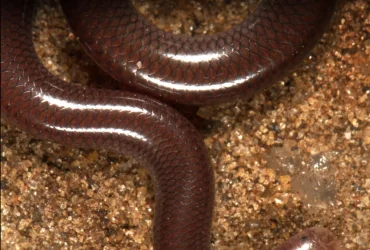 v12i2.309
v12i2.309eISSN: 1800-427X (online)
DOI:10.47605/tapro.v12i2.309
Submitted date: 26 April 2023
Accepted date: 3 November 2023
Published date: 18 November 2023
Pp. 71–93.
A PROVISIONAL GAZETTEER OF COLLECTION LOCATIONS FOR PALM SQUIRRELS (MAMMALIA: SCIURIDAE: Funambulus)
Rajith Dissanayake*
*Corresponding author. E-mail: rajith@mac.com
Abstract
Funambulus Lesson, 1835 incorporates palm squirrels representing model South Asian small mammals. They were widely collected between 1880 and 1980 furnishing international collections, especially in London. There’s a dearth of regional small mammal studies since the 1960s and lack of geographical data could contribute to this. Listed here are 172 locations anchored to ~478 specimens incorporating sites where the genus was collected in mainland South Asia with special attention to obscure localities in South India and Sri Lanka. Emphasis is placed on sites from the Bombay Natural History Society Mammal Survey of India, Burma and Ceylon from 1912 to 1929. This list, with sources, contributes to, and addresses historical and taxonomic mammalogical studies for the entire subregion.
Key words : BNHS, sciurid, map, museum collections, palmarum, rodent, Wroughton, zoogeography
Section Editor: Lee Harding
DOI:10.47605/tapro.v12i2.309
Submitted date: 26 April 2023
Accepted date: 3 November 2023
Published date: 18 November 2023
Pp. 71–93.
A PROVISIONAL GAZETTEER OF COLLECTION LOCATIONS FOR PALM SQUIRRELS (MAMMALIA: SCIURIDAE: Funambulus)
Rajith Dissanayake*
*Corresponding author. E-mail: rajith@mac.com
Abstract
Funambulus Lesson, 1835 incorporates palm squirrels representing model South Asian small mammals. They were widely collected between 1880 and 1980 furnishing international collections, especially in London. There’s a dearth of regional small mammal studies since the 1960s and lack of geographical data could contribute to this. Listed here are 172 locations anchored to ~478 specimens incorporating sites where the genus was collected in mainland South Asia with special attention to obscure localities in South India and Sri Lanka. Emphasis is placed on sites from the Bombay Natural History Society Mammal Survey of India, Burma and Ceylon from 1912 to 1929. This list, with sources, contributes to, and addresses historical and taxonomic mammalogical studies for the entire subregion.
Key words : BNHS, sciurid, map, museum collections, palmarum, rodent, Wroughton, zoogeography
Section Editor: Lee Harding
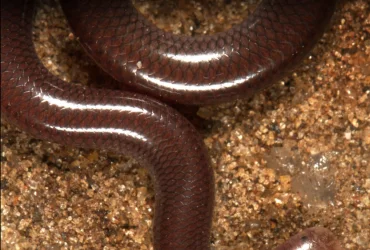
eISSN: 1800-427X (online)
DOI:10.47605/tapro.v12i2.308
Published date: 18 November 2023
Pp. 59–70.
Editorial Note (06 Feb 2024): Retracted by the Authors
CORRESPONDENCE: The Discovery of the Site of the Legendary House of Alfred Russel Wallace in Ternate
Nicholas Hughes* & Rinto Taib
*Corresponding author. E-mail: nhbhughes@gmail.com
Alfred Russel Wallace’s house in Ternate has become legendary as the site where he penned his Ternate Essay outlining his theory of evolution by natural selection and posted it to Charles Darwin in March 1858. Marzuki & Andili (2015) conclude, “Wallace's house in Ternate is the most important science history site in Indonesia”, because this is where he was living when he penned his Ternate Essay. Earlier searches for Wallace’s house concluded that the site was at the Santiong house, based on the presence of an old, deep well and oral history. These findings would have been convincing had there not been any more old, deep wells in the Santiong district where Wallace had lived. This study hypothesized that other old, deep wells might exist within the district. A census was undertaken to identify all such wells - seven were located. The site of one, newly identified, well matched Wallace’s clues most convincingly. This we named the Oranje site. The evidence strongly suggests that Wallace lived on the southern corner of Jalan Merdeka and Jalan Pipit overlooking the southwest bastion of Fort at the Oranje site—not at the Santiong house site.
DOI:10.47605/tapro.v12i2.308
Published date: 18 November 2023
Pp. 59–70.
Editorial Note (06 Feb 2024): Retracted by the Authors
Nicholas Hughes* & Rinto Taib
*Corresponding author. E-mail: nhbhughes@gmail.com
Alfred Russel Wallace’s house in Ternate has become legendary as the site where he penned his Ternate Essay outlining his theory of evolution by natural selection and posted it to Charles Darwin in March 1858. Marzuki & Andili (2015) conclude, “Wallace's house in Ternate is the most important science history site in Indonesia”, because this is where he was living when he penned his Ternate Essay. Earlier searches for Wallace’s house concluded that the site was at the Santiong house, based on the presence of an old, deep well and oral history. These findings would have been convincing had there not been any more old, deep wells in the Santiong district where Wallace had lived. This study hypothesized that other old, deep wells might exist within the district. A census was undertaken to identify all such wells - seven were located. The site of one, newly identified, well matched Wallace’s clues most convincingly. This we named the Oranje site. The evidence strongly suggests that Wallace lived on the southern corner of Jalan Merdeka and Jalan Pipit overlooking the southwest bastion of Fort at the Oranje site—not at the Santiong house site.
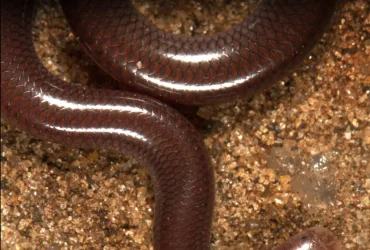 v12i2.307
v12i2.307eISSN: 1800-427X (online)
DOI:10.47605/tapro.v12i2.307
Submitted date: 8 August 2023
Accepted date: 28 October 2023
Published date: 18 November 2023
Pp. 48–58, pls. 22–24.
A NEW DWARF GECKO SPECIES (SQUAMATA: GEKKONIDAE: Cnemaspis) FROM THE NORTHERN WESTERN GHATS OF INDIA
Amit Sayyed*
*Corresponding author. E-mail: amitsayyedsatara@gmail.com
Abstract
Based on molecular and morphological data, I describe a new species of the polyphyletic gekkonid genus Cnemaspis Strauch, 1887 from the northern Western Ghats in India. The new species is the second smallest known Indian dwarf gekkonid and belongs to the clade of C. girii[i] sensu Pal [i]et al. (2021). It is genetically distinct from all congeners of the C. girii clade by p-distance ranging from 3.8 to 8.4 % on the 16S rRNA gene. Morphologically, the new species can be distinguished from all congeners by having the following combination of characters: A small species with adult males reaching a maximum SVL 27.0 mm; heterogeneous dorsal pholidosis with 11–12 longitudinal rows of enlarged tubercles; males with 3–4 femoral pores on each thigh, separated medially by 19–24 poreless scales; 63–65 middorsal scales; 136–150 ventral scales; 33–35 midbody scales; 12–14 subdigital lamellae under fourth digit of pes; feebly carinate scales on the neck and chest; and absence of conical or spine-like tubercles on flank.
Key words : dwarf geckos, girii clade, Maharashtra, molecular phylogeny, 16S, systematics, taxonomy
Section Editor: Thasun Amarasinghe
LSID:urn:lsid:zoobank.org
DOI:10.47605/tapro.v12i2.307
Submitted date: 8 August 2023
Accepted date: 28 October 2023
Published date: 18 November 2023
Pp. 48–58, pls. 22–24.
A NEW DWARF GECKO SPECIES (SQUAMATA: GEKKONIDAE: Cnemaspis) FROM THE NORTHERN WESTERN GHATS OF INDIA
Amit Sayyed*
*Corresponding author. E-mail: amitsayyedsatara@gmail.com
Abstract
Based on molecular and morphological data, I describe a new species of the polyphyletic gekkonid genus Cnemaspis Strauch, 1887 from the northern Western Ghats in India. The new species is the second smallest known Indian dwarf gekkonid and belongs to the clade of C. girii[i] sensu Pal [i]et al. (2021). It is genetically distinct from all congeners of the C. girii clade by p-distance ranging from 3.8 to 8.4 % on the 16S rRNA gene. Morphologically, the new species can be distinguished from all congeners by having the following combination of characters: A small species with adult males reaching a maximum SVL 27.0 mm; heterogeneous dorsal pholidosis with 11–12 longitudinal rows of enlarged tubercles; males with 3–4 femoral pores on each thigh, separated medially by 19–24 poreless scales; 63–65 middorsal scales; 136–150 ventral scales; 33–35 midbody scales; 12–14 subdigital lamellae under fourth digit of pes; feebly carinate scales on the neck and chest; and absence of conical or spine-like tubercles on flank.
Key words : dwarf geckos, girii clade, Maharashtra, molecular phylogeny, 16S, systematics, taxonomy
Section Editor: Thasun Amarasinghe
LSID:urn:lsid:zoobank.org
Hubungi Kami
The ultimate aim of the journal is to provide an effective medium for communication of the latest and best scientific information.
Copyright © 2020 Taprobanica. All Rights Reserved
Jasa Pembuatan Website by IKT




